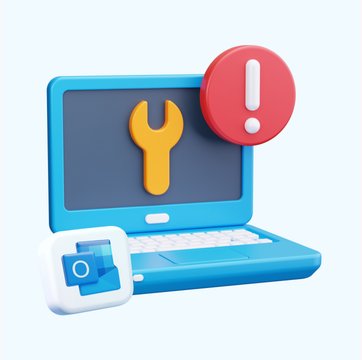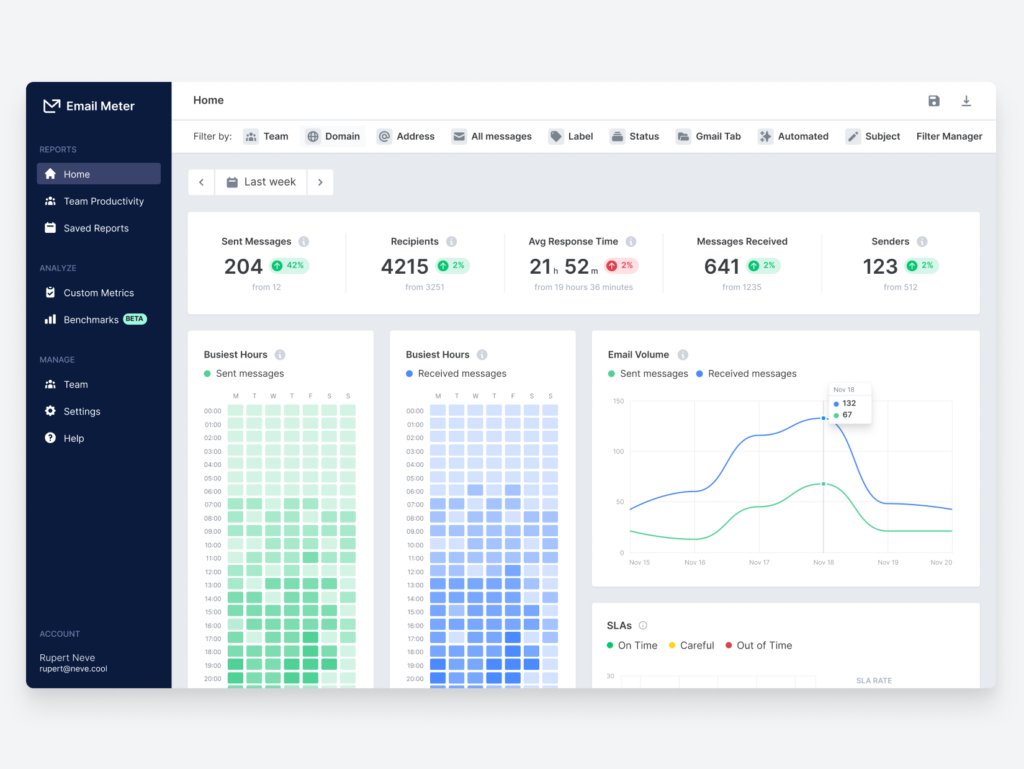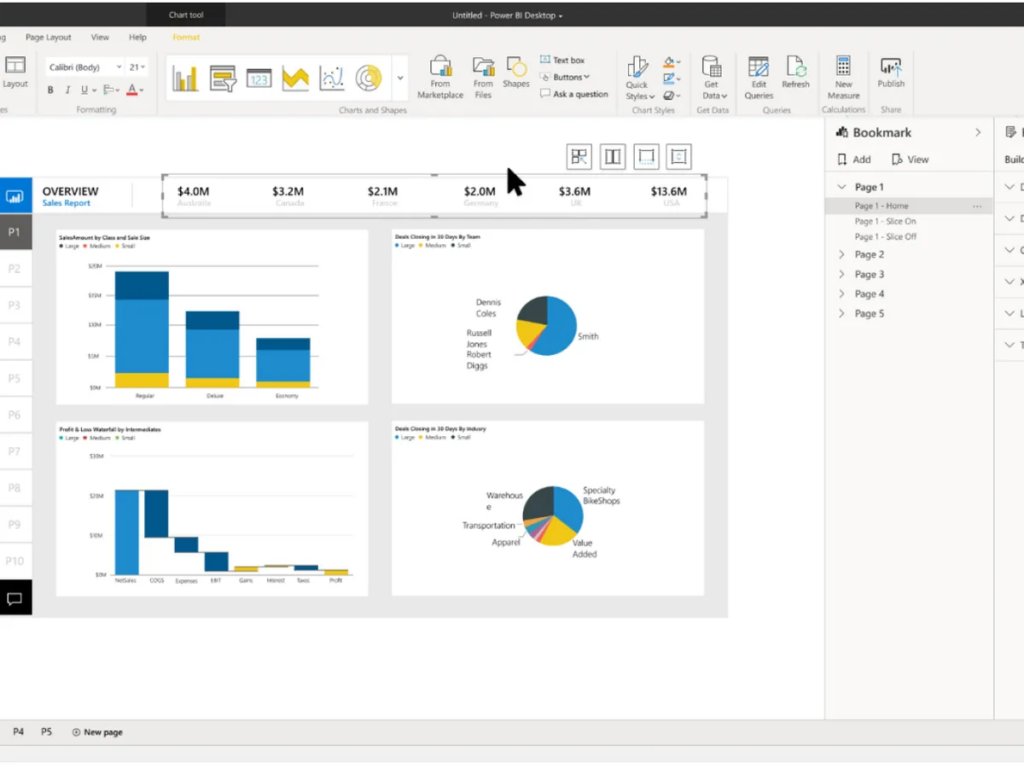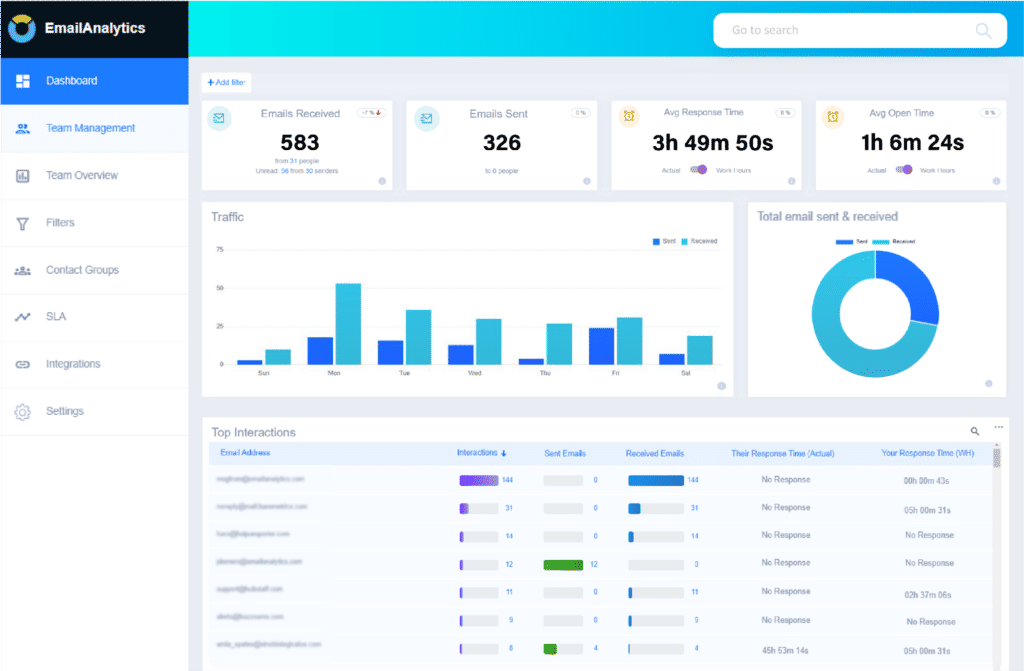5 Tools To Master Outlook Analytics in 2025

Table of contents
If you’re a Microsoft Outlook user, you must be aware of the recent outage that affected millions of users worldwide and even incurred millions of dollars in losses. This simply goes to show just how crucial Outlook is for business operations around the globe.
For many organizations, Outlook isn’t just an email client—it’s a vital tool for communication and productivity. But to make the most of it, measuring performance is essential.
Without proper metrics, it’s impossible to gauge the success of your operations or make informed, data-driven decisions. This is where Outlook Analytics comes in.
In this article, we’ll majorly explore 5 tools to master Outlook Analytics, and also understand the features to look for when selecting one.
Table of Contents
- What is Outlook Analytics?
- 5 Tools To Master Outlook Analytics
- Features to Look for in Your Outlook Analytics Tool
- Final Thoughts
What is Outlook Analytics?
Outlook Analytics refers to various methods and tools available to help users track and analyze their email usage. Although Outlook itself doesn’t provide extensive native analytics features, you can leverage external tools and add-ins like Hiver to gain valuable insights into your email habits. These tools can help you with comprehensive metrics to track and improve your team’s performance.
5 Tools To Master Outlook Analytics
Outlook Analytics can significantly enhance your email management by providing valuable insights into your email usage. To make the most of these analytics, here are five tools that can help you track and analyze your emails in Outlook:
1. Hiver:
Hiver is a comprehensive email management tool designed to enhance the capabilities of Outlook and Gmail. It offers advanced analytics, shared inboxes, email tracking, and collaborative tools that streamline email management and improve productivity. Hiver is particularly useful for teams that need to manage customer queries efficiently.

Hiver’s standout features include its ability to manage shared inboxes, providing a clear view of who is handling which email. This is crucial for customer support teams to ensure all queries are addressed promptly. Its advanced analytics offer detailed performance metrics, helping you understand and improve your team’s efficiency.
Key Features:
- Shared Inboxes: Allows teams to manage emails collaboratively. For example, a customer support team can handle customer queries more effectively by seeing who is handling which email.
- Advanced Analytics: Provides detailed insights into email performance and team productivity. For instance, you can track the response time of individual team members and identify areas for improvement.
- Custom Reports: Helps analyze the metrics that matter to your business across all your shared inboxes in a single place.
- Collaborative Tools: Lets you assign tasks, add notes, and streamline communication within your team directly from your inbox. This ensures everyone is on the same page and helps resolve issues faster.
2. Office 365 Reports:
Office 365 provides built-in reports that give you an overview of your email activity. These reports include data on sent and received emails, active users, and more, helping you understand your email usage patterns. It is not as comprehensive as the other tools on the list but still gives you a peak into some basic metrics.

They are particularly useful for administrators who need to monitor email activity across their organization. For example, an admin can see which departments send the most emails and adjust resources accordingly.
Key Features:
- Email activity reports
- User activity insights
- Sent and received email metrics
3. Email Meter
Email Meter is an analytics tool designed to provide detailed insights into your email activity. It tracks metrics such as email response time, traffic by day and hour, and top senders and recipients. This tool is particularly beneficial for teams needing to monitor performance and enhance productivity.

Email Meter stands out with its advanced reporting capabilities, offering a comprehensive view of your email habits. It helps identify communication patterns and areas for improvement, making it easier to manage and optimize email workflows.
Key Features:
- Email activity reports
- Response time tracking
- Top sender and recipient metrics
4. Power BI:
Power BI is a powerful business analytics tool that integrates with Outlook to provide advanced data visualization and reporting capabilities. It helps you create power BI reports and dashboards, enabling you to analyze your email data more effectively.

Power BI’s flexibility allows you to customize reports to suit your specific needs, making it ideal for large organizations that require detailed analytics.
Key Features:
- Customizable dashboards
- Advanced data visualization
- Detailed email reports
5. EmailAnalytics:
EmailAnalytics is an add-in for Outlook that provides detailed analytics on your email activity. It helps you track metrics such as email response time, email traffic by day and hour, and top senders and recipients.

This tool is especially useful for sales and support teams who need to monitor their email performance closely. For example, a sales team can track which emails get the most responses and adjust their strategies.
Key Features:
- Email response time tracking
- Email traffic analysis
- Top sender and recipient metrics
Features to Look for in Your Outlook Analytics Tool
When choosing an analytics tool for Outlook, it’s important to consider the features that will provide the most value to your workflow. Here are some key features to look for:
1. Comprehensive Email Tracking:
Look for tools that offer detailed email tracking capabilities. This includes tracking response times, and click-through rates. Comprehensive email tracking helps you understand how recipients interact with your emails, allowing you to optimize your communication strategies.
2. Customizable Reports:
Analytics tools that offer customizable reports enable you to tailor the data to your specific needs. This can include filtering by date range, email categories, or specific contacts. Customizable reports ensure you get the insights that matter most to your organization.
3. User-Friendly Dashboards:
A user-friendly dashboard is crucial for quickly accessing and interpreting your email data. Look for tools that provide intuitive and visually appealing dashboards, making it easy to monitor key metrics at a glance.
4. Integration with Other Tools:
Ensure the analytics tool integrates seamlessly with other tools and platforms you use, such as CRM systems or project management software. This integration can streamline your workflow and enhance the overall utility of the analytics tool.
5. Data Security and Privacy:
Choose tools that prioritize data security and privacy. This includes features like data encryption, compliance with data protection regulations, and robust access controls. Ensuring your email data is secure is critical for maintaining trust and compliance.
Final Thoughts
Mastering Outlook Analytics can significantly enhance your email management and productivity. While native tools provide a solid foundation, integrating tools like Hiver can take your analytics to the next level, offering detailed insights and advanced features. By leveraging both Outlook Analytics and Hiver, you can ensure that your email communication is efficient, effective, and insightful.
Think of it this way: Outlook Analytics is your starter kit, giving you the basic tools to get going. But to truly master your email game, tools like Hiver act as the advanced toolkit, providing the precision and power needed to excel. I suggest looking for a tool that fits your business needs, taking a trial to understand it, and then committing to it.

































